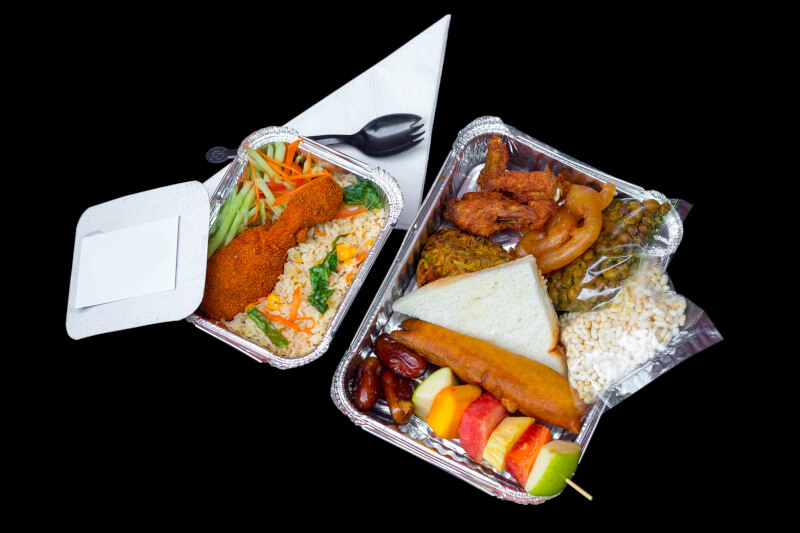A Surprising Ingredient
In 1945, Earl Tupper sought plastic resin from Bakelite, but due to scarcity, was handed a polyethylene slag – a dense, rubbery waste from petroleum refining. Although discarded by companies like DuPont and Bakelite, this “black gold” held immense potential for Tupper.
Revolutionizing Food Storage
Before the advent of Tupperware, food preservation methods were rudimentary. Wax paper, foil, or even shower caps were commonly used to cover food. Glass containers existed but posed risks, especially in households with children. Tupperware, with its spill-proof and airtight seal, inspired by paint-can lids, was a game-changer. Its debut product, the “Wonderbowl,” paved the way for modern food storage.
Overcoming Plastic’s Dark Past
Although innovative, Tupperware initially struggled in the market. Past experiences with plastics – like greasy, combustible Bakelite containing formaldehyde – tainted consumers’ perceptions. Yet, Tupperware’s lightweight, non-toxic, and odorless properties set it apart. It wouldn’t warp in hot water or spill when dropped. Tupper had to convince the market of its unique value.
Sales Party Strategy
Tupperware’s breakthrough came from an unexpected quarter: mental hospitals and independent salespeople from Stanley Home Products. The latter used the “party plan” sales method, where a salesperson would demonstrate products at a house-hosted party. Notably, Tupperware started outshining other products at these gatherings.
Brownie Wise: The Tupperware Queen
One of the most successful salespeople, Brownie Wise, was selling a staggering $150,000 worth of Tupperware annually by the early 1950s. Recognizing her prowess, Tupper hired her to lead a new subsidiary, Tupperware Home Parties. Brownie transformed the sales approach, and soon, Tupperware became synonymous with home sales parties. Thanks to her efforts, the Tupperware brand gained cultural significance in the 1950s.
Unjust Downfall
Despite the soaring success under Wise’s leadership, Earl Tupper’s discomfort with her growing prominence led to her sudden dismissal in 1958. Tupper, believing that the company wouldn’t survive without Wise, predicted its downfall. History, however, had other plans. Today, Tupperware stands as a $4.2 billion brand with a global presence, and every 1.75 seconds, a Tupperware party keeps Brownie Wise’s legacy alive.
Legacy of a Visionary
Brownie Wise’s post-Tupperware journey saw her leading Cinderella Cosmetics, although the venture didn’t succeed. Despite passing away in 1992 without the recognition she deserved from Tupperware, Wise’s impact on direct selling and the empowerment of women in business remains immeasurable. Today, her strategies continue to influence a new generation of Tupperware sellers across the globe.
Shaping Today’s Lifestyle
- Everyday Convenience at Your Fingertips Tupperware, since its inception, has seamlessly integrated into our daily lives. Whether you’re packing your lunch, storing leftovers, or organizing your pantry, you’ll find Tupperware’s versatile containers indispensable. With the ease they bring into modern kitchens, you and your family can experience efficient food storage, ensuring freshness and reducing wastage.
- Empowering Your Green Journey In a world increasingly leaning towards sustainability, Tupperware emerges as a front-runner. By providing reusable options for food storage, it has significantly reduced the dependence on single-use plastics. Every time you choose Tupperware over disposable wraps or bags, you’re making an eco-friendly choice, playing your part in preserving the planet for future generations.
- The Evolution of Social Commerce Brownie Wise’s revolutionary “party plan” method set the stage for today’s social commerce strategies. As you host or attend Tupperware parties, you’re not just buying or selling products; you’re engaging in a legacy of community-based commerce. This approach has laid the foundation for many brands today, allowing you and your peers to experience products in a social, trust-based setting.
- Empowerment Through Enterprise Tupperware’s sales model has always been about more than just products. It has offered countless individuals, especially women, a platform for economic empowerment. By becoming a “Tupperware lady”, you’re joining a lineage of entrepreneurs who’ve balanced family life with successful careers. The model has inspired multiple direct-selling businesses, offering you and many others flexible work opportunities.
- Preserving Culinary Traditions With the ability to store food securely and extend its freshness, Tupperware has inadvertently played a role in preserving culinary traditions. Whether it’s your grandmother’s special sauce or a seasonal delicacy, these containers help ensure that flavors from the past continue to enrich your present. Sharing meals and recipes with loved ones becomes simpler and more meaningful, bridging generational gaps.
- Tupperware’s Sustainability vs. Plastic Production
Material Matters: Biodegradability Concerns
While Tupperware’s reusable nature has cut down on single-use plastic waste, there’s still the matter of their long-term environmental footprint. The primary material of Tupperware, plastic, isn’t biodegradable. This poses a challenge: even as you save on single-use plastics, there’s still the concern of what happens to these containers once they’ve outlived their usefulness. The decomposition of plastics can take hundreds of years, leaving us with the question of whether we’re merely delaying an environmental impact rather than preventing it.
Empowerment or Entrapment?
Tupperware parties, largely targeted towards housewives, have been hailed as platforms of empowerment. However, there’s debate about whether these gatherings and the associated sales roles truly offered liberation or merely extended traditional gender roles into the commercial sphere. Did the “Tupperware lady” phenomenon genuinely provide women with entrepreneurial power, or did it reinforce the idea that a woman’s place, even in business, was primarily at home?
Global Production and Local Markets
Tupperware, as a global brand, manufactures its products in various parts of the world. While this has economic benefits in terms of production costs, there’s debate about its impact on local markets. On one hand, producing in countries with cheaper labor costs can reduce prices for consumers. On the other, it may undercut local manufacturers and contribute to economic imbalances. As you make your Tupperware purchase, are you inadvertently affecting a local economy?
The Global Tupperware Party
The Tupperware party model has been adapted and adopted in various cultures across the world. But as the model moves beyond its American suburban origins, questions arise about cultural sensitivity and appropriation. Are Tupperware parties in different countries merely mimicking a Western sales model, or are they being genuinely adapted to respect and reflect local traditions and values?
The Plastic and Food Safety Debate
Over the years, there’s been rising concern about the safety of storing food in plastic containers. Studies have indicated potential risks of chemicals leaching from plastics into food, especially under certain conditions like heating. While Tupperware products are subjected to rigorous safety tests, the broader debate about plastic’s safety in food storage remains. As you microwave or freeze your food in these containers, are you also exposing yourself to potential health risks?




